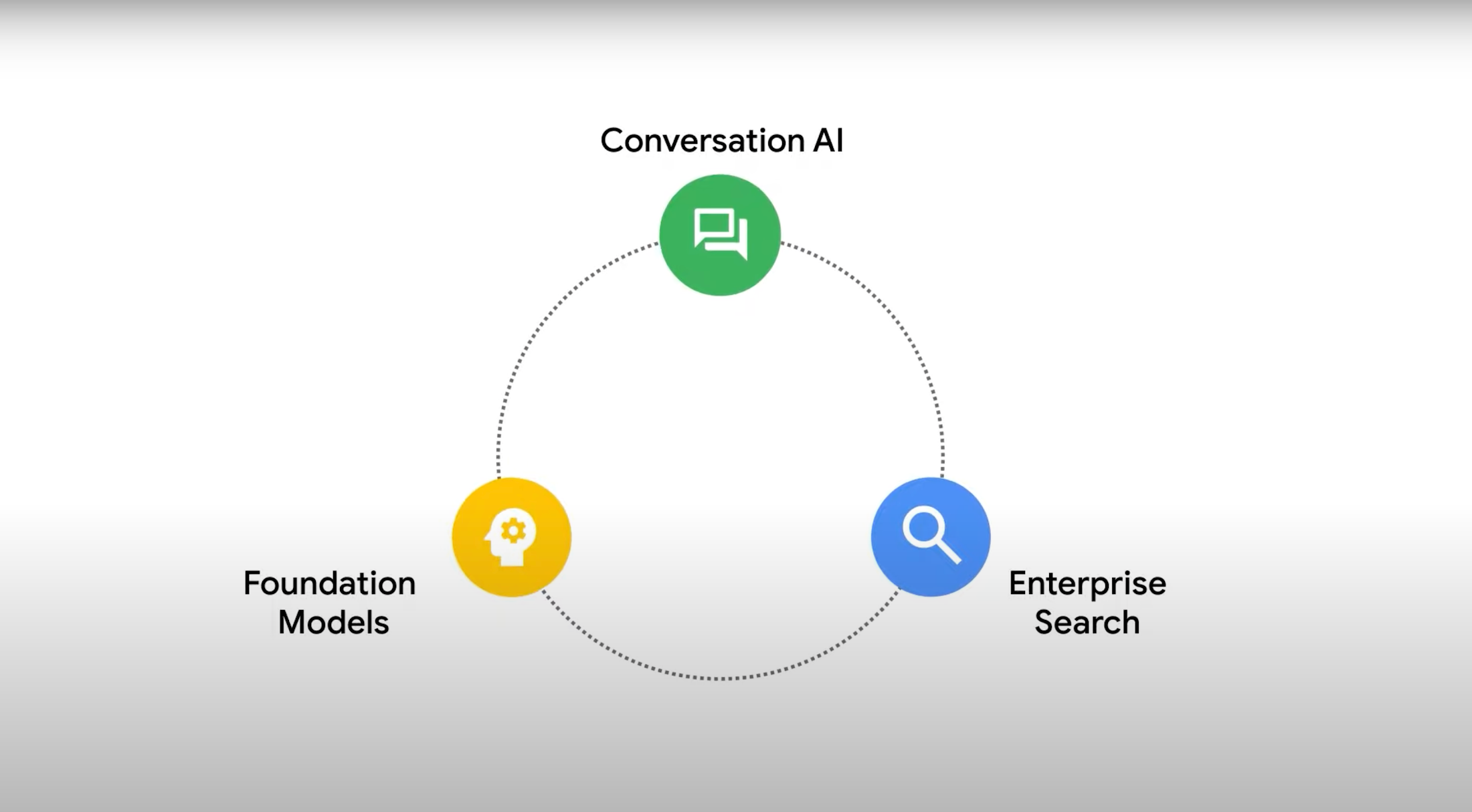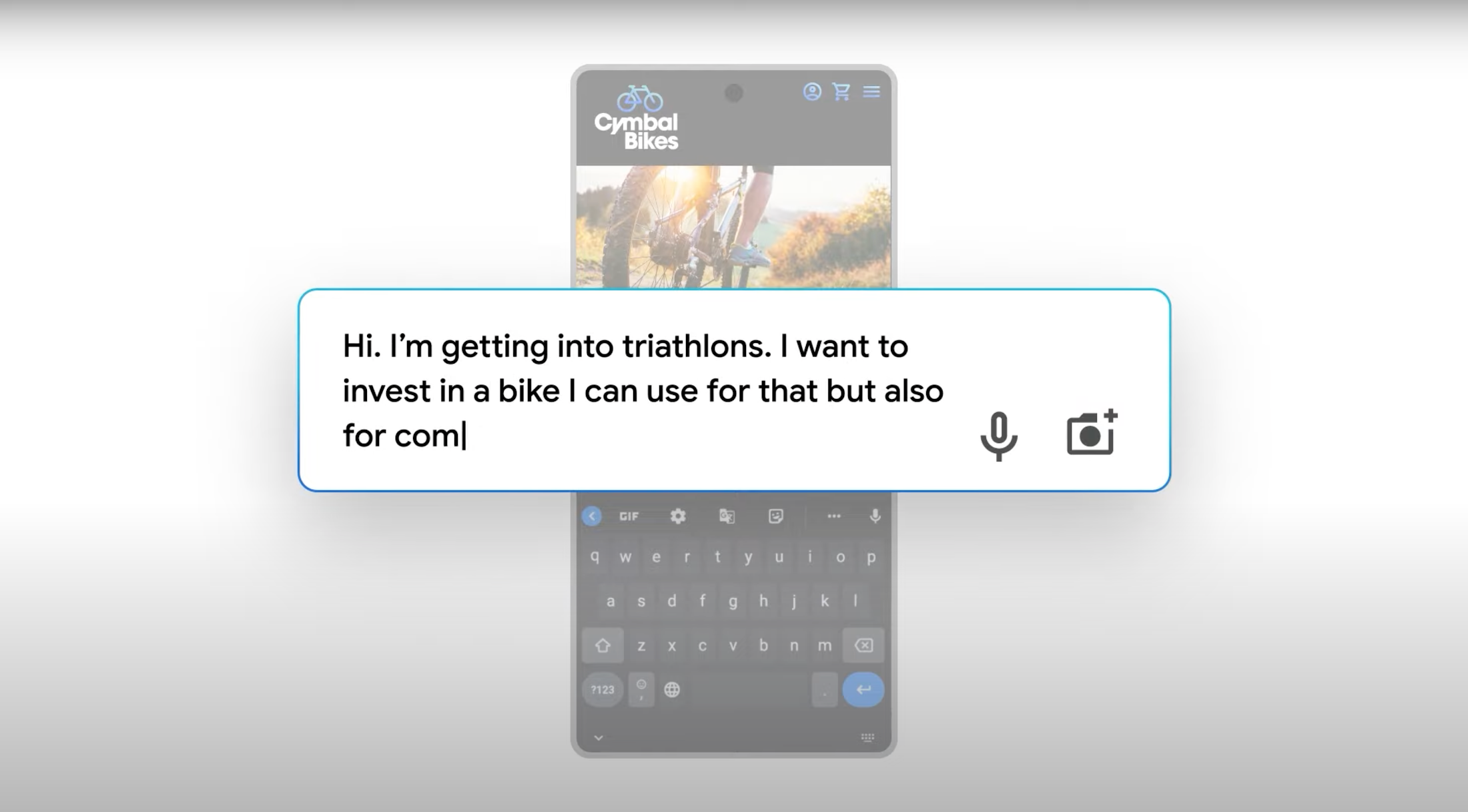The Prompt: Top generative AI themes from the last quarter

Philip Moyer
Global VP, AI & Business Solutions at Google Cloud
Business leaders are buzzing about generative AI. To help you keep up with this fast-moving, transformative topic, each week in “The Prompt,” we’ll bring you observations from our work with customers and partners, as well as the newest AI happenings at Google. In this edition, Philip Moyer, Global VP, AI & Business Solutions at Google Cloud, reflects on major themes from the past several months.
The last few months have been a whirlwind. Generative AI is no longer just an object of fascination and disruptive potential—it’s a technology that’s accessible to organizations around the world. From AI customer service assistants and coding collaborators to an app for facilitating better drive-through experiences, Google Cloud customers have begun to harness the technology in all kinds of innovative ways.
The pace remains relentless. But with our American readers taking a break for the Fourth of July and many of our international readers relaxing on summer vacations, we think it’s an excellent time to reinforce what we’ve learned and discussed since kicking off "The Prompt" in April.
Where should you start?
If you’re new to generative AI, start by ensuring you’re familiar with key concepts and how they affect your business.
It’s a complex topic, so getting lost in the weeds is easy. The finer points of gradient descent and activation functions will probably remain the purview of data scientists, but executives should be familiar with core technology concepts like foundation models (such as Google’s PaLM 2), model customization methods (such as fine-tuning), and approaches to combining proprietary data and generative capabilities (such as embeddings).
Once you have core concepts down, you’ll be better equipped to distinguish generative AI’s actionable potential from the hype and noise in the marketplace. For instance, bigger models aren’t always better for a given use case, and though single foundation models draw a lot of attention, we expect enterprises to use many models rather than “one model to rule them all."
For more, check out:
Are there best practices or key use cases for successful generative AI adoption?
Generative AI is a young technology, so even organizations well-versed in machine learning are still assessing the best uses and implementation approaches. Because the technology's potential is so wide-ranging, there’s not even a clear consensus regarding which enterprise functions — like IT versus marketing — will be most affected. Even so, a number of guiding principles are emerging.
Adoption can take different forms. Some people within your organization have likely already tried generative AI assistants for various tasks—and some of those employees have probably done so without IT approval or awareness. AI-enabled productivity platforms, apps, and assistants can help people to be more productive and creative, but enterprises need to be wary of “shadow IT” scenarios, such as corporate data being exposed via unsanctioned use of an AI app.
Beyond third-party apps, your business's generative AI journey will probably include custom applications. Some appetite for moonshots can be helpful here; in a few years, generative AI will likely be applied in amazing ways that are difficult to fathom or anticipate today. But future ambition needs to be balanced by actionable use cases that can add value now.
For many organizations, AI chatbots and enterprise search apps are a great starting point.
Chatbots powered with modern foundation models are already helping call center agents to be more productive, and organizations are increasingly investing in generative customer service chatbots for richer, more personal customer experiences. For enterprise search and information management, generative AI can unlock new ways to navigate and leverage information, turning the impossible task of synthesizing thousands of internal documents into a simple prompt and a generative reply.
These use cases share three common elements: they provide obvious opportunities for rapid value; they can be implemented without significant data science or machine learning expertise; and they let organizations become comfortable working with foundation models internally or via limited public-facing projects as they continue to accrue generative AI expertise and graduate to more innovative work. That trifecta reinforces why information management and AI chat assistants are an accessible onramp for getting started with generative AI. Check out the below videos to see these concepts in action:


For more, check out:
What do you need besides a foundation model?
Foundation models power generative AI, but leveraging them for deployment-worthy custom apps involves additional pieces.
For starters, you need infrastructure capable of reliably running AI workloads at scale, mechanisms for tuning models or grounding them in specific data sources, tools for building apps around these models, and much more. For common use cases, like enterprise search and chat, technology providers have introduced many products in recent months to streamline the complexity. For most companies, cloud platforms provide arguably the lowest-friction path to assembling the necessary capabilities to scale out a generative AI practice.
Google Cloud’s Generative AI App Builder, for example, lets organizations create enterprise search engines and chatbots in as little as a few minutes. And if your organization is ready to go beyond the common use cases, our customers undertaking more sophisticated projects leverage Generative AI support on Vertex AI, which offers access to a variety of foundation models, including PaLM 2, and a robust platform for model development, tuning, management, and deployment.
To enable generative AI adoption, platform capabilities are just as important as foundation models.
Philip Moyer, Global VP, AI & Business Solutions at Google Cloud
To enable generative AI adoption, platform capabilities are just as important as foundation models. Needs will vary by company, and the preceding is just an illustration, not an exhaustive list of platform considerations—we’ve only lightly alluded in this article to important topics like data privacy, security, or Responsible AI, for example. But suffice to say, thinking in terms of platform capabilities — not just models — is vital to building and scaling generative AI capabilities.
For more, check out:
How does generative AI affect your workforce?
Generative AI is a transformative technology with the potential to affect the majority of jobs. Commentators have raised valid questions about job loss due to automation. However, you might have noticed that the use cases I’ve referenced above don’t involve automating away jobs so much as empowering people. We believe that’s the most useful lens for imagining generative AI applications.
The goal when exploring generative AI adoption: reduce drudgery, discover new insights, delight customers. All by using AI to empower people to do things they can’t easily do today.
Philip Moyer, Global VP, AI & Business Solutions at Google Cloud
When crafting your generative AI adoption strategy, the goal should be to reduce drudgery, discover new insights, and delight customers, all by using AI to empower people to do things they can’t easily do today.
Many organizations are exploring ways to automate the drafting of repetitive business documents or enable brainstorming, for instance — but in our conversations with customers, executives recognize these projects are about removing toil so employees are empowered to focus on more satisfying, creative, and human work. There are literally countless possible applications for generative AI, which is what makes this technology so exciting—but the best ones tend to put a human not just “in the loop,” but at the center.
For more, check out:
Start exploring
This article encapsulates our major themes in "The Prompt" over the last few months, but generative AI is a vast topic—and the best way to discover what it can do for your business is to keep exploring.
For a look at different industry trends, check out our commentary on the buzz at several recent major trade shows. For a glimpse of some of the incredible applications that might arise, see our article about generative AI potentially helping humans understand animals. And to get more hands on, peruse our free generative AI training and educational materials.



